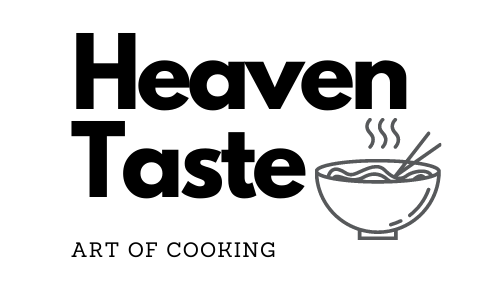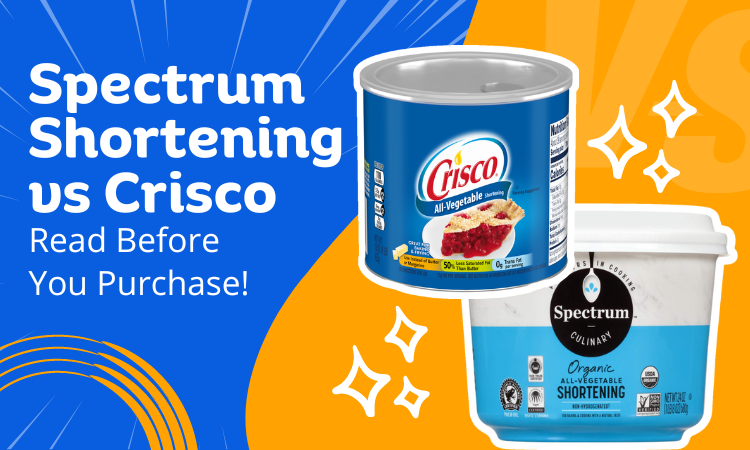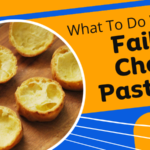Shortening is one of the essential ingredients for making a cake. Spectrum shortening and Crisco are both types of vegetable shortening used in cooking and baking. Maybe you’re going to shop that’s why want to know which one performs better.
So, which one is better, Spectrum shortening vs Crisco?
In Spectrum shortening vs Crisco, Spectrum shortening is made with organic palm oil while Crisco consists of soybean and palm oil. The amount of saturated fat per tablespoon of Spectrum is 6g. And in Crisco, you’ll get 3.5g of saturated fat per tbsp. The smoke point of Spectrum is 490 degrees F while Crisco comes with 450 degrees F.
These two shortenings incorporate more comparative factors. So hang tight with the article to know each of them in a detailed manner.
Spectrum Shortening Vs Crisco: Comparison of Common Factors

Though they seem quite similar, there are some differences as well. When it comes to cooking and baking, both Spectrum Shortening and Crisco can be used interchangeably in recipes.
If you’re looking for the better one, continue reading the article. At first, let’s have a glimpse of the similarities and differences in a quick manner.
| Factors | Spectrum | Crisco |
| Ingredients | Organic palm oil | Soybean oil, palm oil |
| Saturated fat (per tbsp) | 6g | 3.5g |
| Hydrogenated fat | Absent | Present |
| Taste | Neutral | Has an aftertaste |
| Gluten content | None | None |
| Shelf life | 2 years | 2 years |
| Smoke point | 490°F | 450°F |
| Creaming ability | Good | Good |
| Diet type | Kosher, vegan-friendly | Kosher, vegan-friendly |
| Price | $0.62 / Ounce | $0.67 / Ounce |
Now, it’s time to describe the factors in a broader manner. So that you can easily pick one.
Comparison 1: Ingredients
Ingredients are one of the crucial factors when it comes to describing the shortening properly. In fact, some people may prefer one ingredient over the other based on personal preferences or dietary restrictions.
So, when comparing the ingredients of Spectrum Shortening and Crisco, it’s important to note that both contain palm oil. However, Spectrum Shortening is made solely from palm oil, while Crisco also contains soybean oil in addition to palm oil.
This means that both products are vegetable shortenings. On the other hand, Crisco has a slightly different composition due to the inclusion of soybean oil.
Comparison 2: Saturated fat (per tbsp)
Both of the shortenings consist of saturated fat but in different amounts. While using shortening, you should choose one which consists of a lesser amount of saturated fat. Per tablespoon of Spectrum shortening contains 6g of saturated fat. On the other hand, you’ll find 3.5g of saturated fat per tablespoon of Crisco shortening.
However, it’s worth noting that both products are still sources of saturated fat, which can contribute to health issues when consumed in excess. Therefore, it’s important to use both in moderation as part of a balanced diet.
Comparison 3: Hydrogenated fat
In terms of hydrogenated fat, both of the shortenings differ in status. Spectrum shortening contains hydrogenated fat while it’s absent in Crisco. So, Crisco is providing an advantage from a health perspective.

Hydrogenation is a process that turns liquid oils into solid fats. And it is often used in the production of vegetable shortening. While hydrogenation can increase the shelf life and stability of the product, it also creates trans fats, which have been linked to an increased risk of heart disease.
Comparison 4: Taste
When it comes to talking about taste, Spectrum shortening has a neutral taste. This means it does not impart any particular flavor to the foods it’s used in.
On the other hand, Crisco comes with a distinct aftertaste which can be undesirable to some people. In fact, your mouth can linger after having Crisco.
Actually, the taste difference between spectrum shortening and Crisco is a matter of personal preferences and may depend on the specific recipe being used. However, if you want tacky dough, the taste won’t matter you can use any of them.
Comparison 5: Gluten content
Gluten content is an essential factor to consider when choosing a nongluten one. In fact, it’s important to know especially for gluten-intolerant people.
This section will seem a happy one for everyone because both Spectrum and Crisco’s shortening are gluten-free.
So, it goes to prove that both of them do not contain any ingredients derived from gluten-containing grains such as wheat barley, or rye. Then, making them safe for people with gluten sensitivities or celiac disease to consume.
Comparison 6: Shelf life
It’s worth noting that both of the shortenings are able to serve 2 years of shelf life. However, the shelf life of both products can be affected by many factors. Such as exposure to light, heat, and air, as well as the storage conditions in which they are kept.
According to “The Food Keeper” guide by the Food Marketing Institute, it is recommended to store unopened Crisco shortening, at room temperature for up to 8 months to ensure optimal freshness.

Once opened, it is best to store solid shortening at room temperature for up to 3 months to maintain its quality.
Comparison 7: Smoke point
Spectrum Shortening has a smoke point of 490 degrees Fahrenheit, while Crisco Shortening has a smoke point of 450 degrees Fahrenheit. Usually, the fat and oil begin to break down and smoke in the smoke point. So the temperature of the smoke point is important to consider.
A higher smoke point means that the oil or fat can be used at higher temperatures. This is without smoking or burning, which is useful for high-heat cooking methods like frying.
Therefore, Spectrum shortening has relatively high smoke points which are very suitable for baking and cooking applications. Considering smoke point is necessary while you’re working with it.
Comparison 8: Creaming ability
Vegetable shortening is often used in place of butter or margarine for creaming. This is because, it has a higher melting point and can create a more stable, fluffy mixture.
Both Spectrum Shortening and Crisco have been specifically formulated for baking. And they are known for their ability to create a light and creamy texture when creamed with sugar. You can bake them in the OTG too.
Creaming refers to the process of mixing fat and sugar together to create a light and fluffy mixture, which is an important step in many baking recipes, particularly for cakes and cookies.
Comparison 9: Diet type
If you’re a vegan, you can pick any of the shortenings from Spectrum and Crisco. That’s because both of them are vegan-friendly. Also, both of the products share the similarity of having a diet type that is kosher. Then, you can handle problems faced with a cake doll pan with both of the shortenings.
Comparison 10: Price
Comparing the two, the price per ounce of Spectrum shortening is $0.62. While the price per ounce of Crisco shortening is slightly higher at $0.67. So, you are getting the Spectrum shortening at a cheaper rate than Crisco.
So, Which One Is Better? Spectrum Shortening or Crisco
Still in doubt to pick one? Well, both Spectrum and Crisco are popular and respected brands. If you want to cut off extra expenses, you should go for Spectrum one since Crisco is a bit expensive. Conversely, Crisco is a better choice if you hate to add additional saturated fat to your diet.
Then, Spectrum is free from hydrogenated fat which is positively significant enough. Because it’s bad for health since contains high levels of trans fats. On the other hand, Crisco contains hydrogenated fat. So, you should go for Spectrum.
Taste is so important to choose a shortening. Spectrum is neutral in taste while Crisco leaves an aftertaste. If you hate having an aftertaste, Spectrum will be your holy grail.
Considering the smoke point, Spectrum will serve you better since its smoke point is 490°F which is higher than Crisco. On the other hand, if you hate full palm oil content, you can go for Crisco since it contains soybean oil as well.
Moreover, regarding shelf life creaming ability and diet type, they are relatively the same. So whatever you pick you’ll get the same service.
Finally, people’s choice and requirement varies as we all know. So you should pick according to your personal preferences and needs.
Frequently Asked Questions (FAQs):
What are Spectrum shortening substitutes?
The most common Spectrum shortening substitutes include coconut oil, palm oil, and a blend of palm oil and canola oil. However, these substitutes may have slightly different properties than traditional vegetable shortening.
Is Spectrum organic shortening healthy?
Compared to regular shortening, Spectrum Shortening is a healthier option for your body for many reasons. Because it does not undergo hydrogenation, which means it is free from harmful trans fats. Also, it is crafted using palm oil, a naturally cholesterol-free ingredient that contains beneficial monounsaturated fat, which is good for heart health.
Is shortening more healthy than butter?
No, shortening is no healthier than butter. Previously, shortening was believed to be a healthier alternative to butter, as it contained lower levels of saturated fat. However, recent findings go to prove that heavily processed shortening does not offer any significant health benefits when compared to butter.
Conclusion
Hopefully, you can understand all the differences and similarities between Spectrum shortening vs Crisco. Both are fantastic shortening when it comes to performing in the field of baking and cooking. However, they lock their horns regarding some factors.
You have to pick one according to your requirements.
Happy baking!





